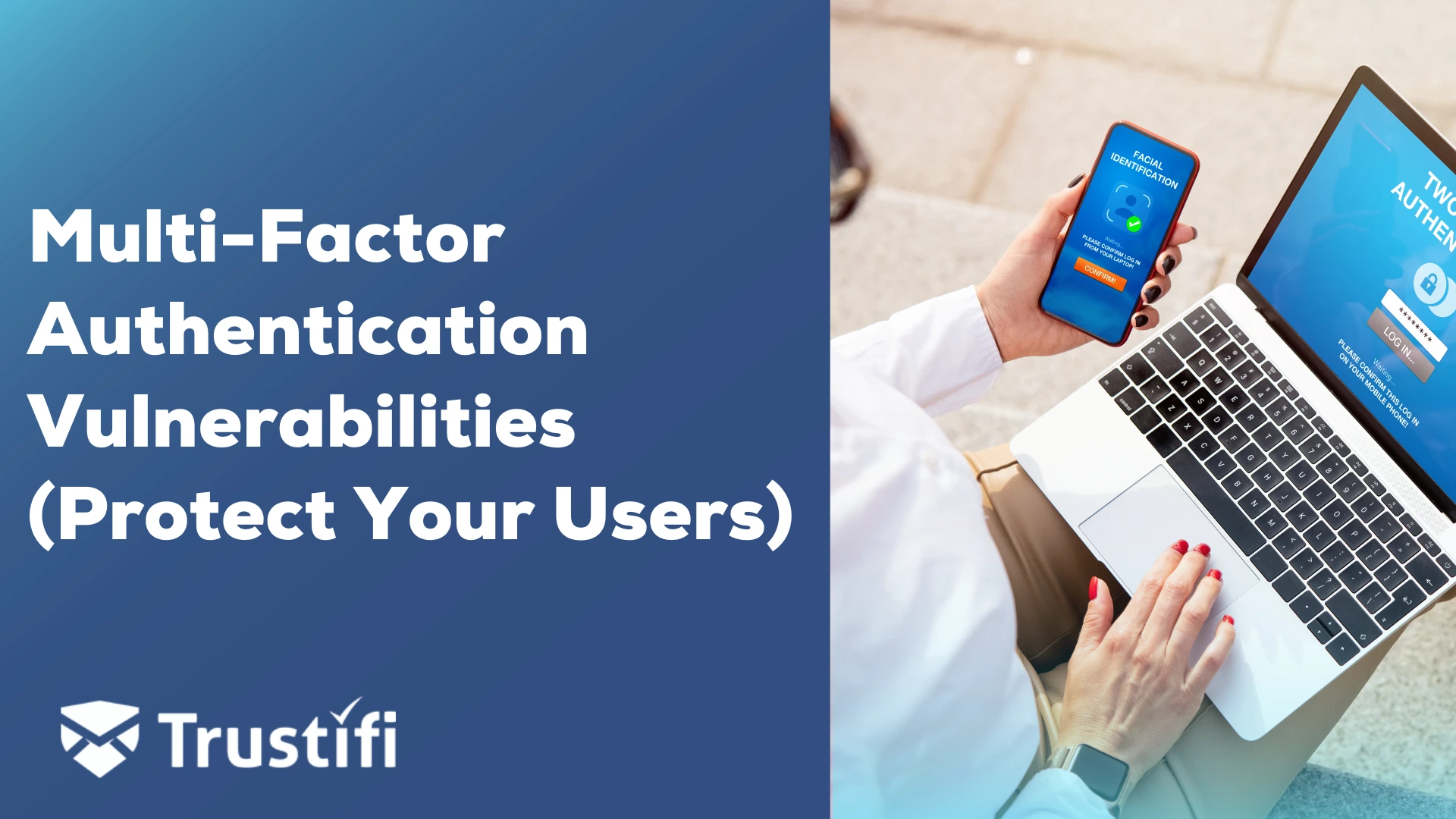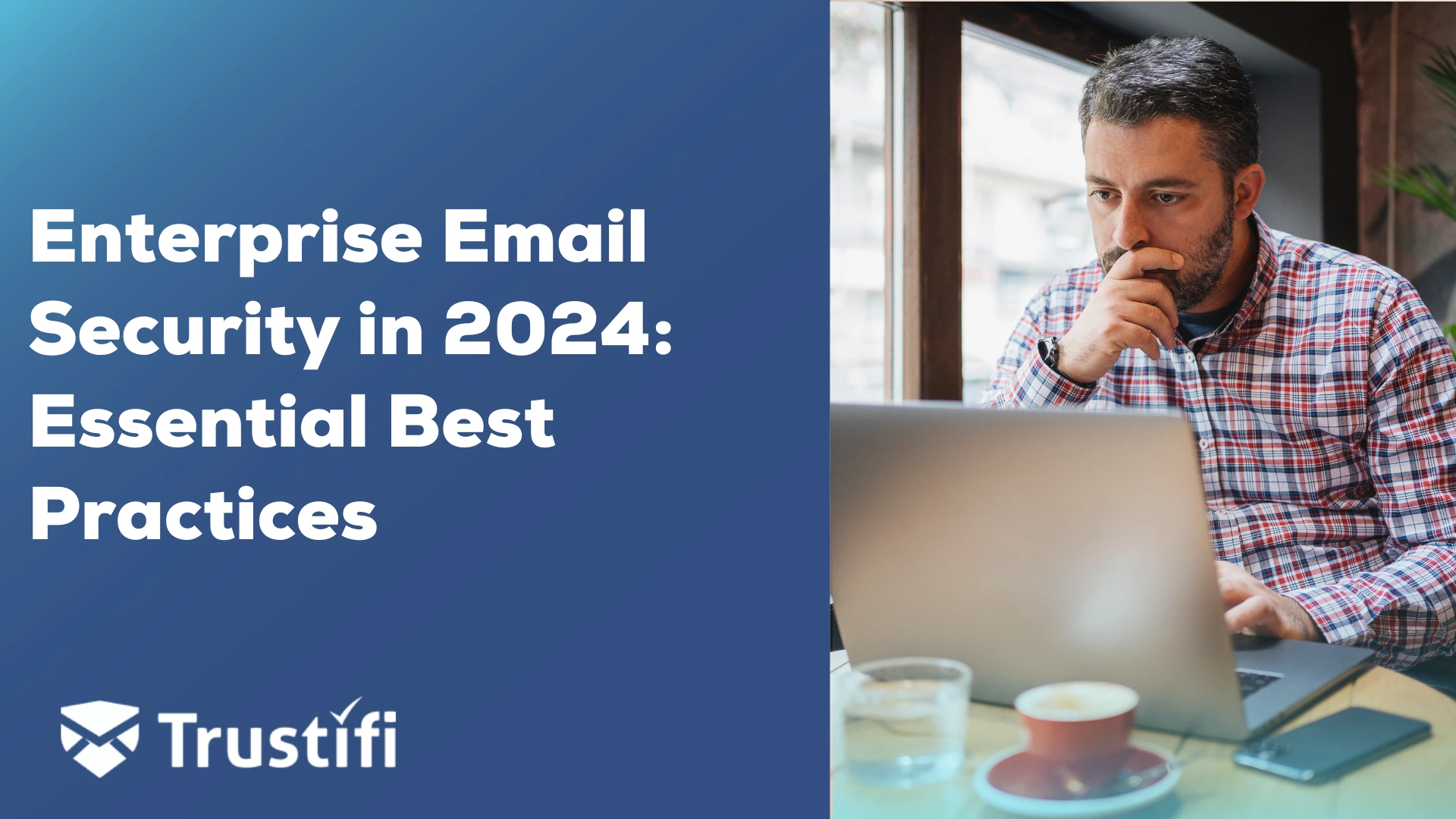Microsoft 365 (M365) is used by over a million companies worldwide, with over a hundred million customers in the United States using the Office Suite software alone. M365 is the brand name previously used by Microsoft for software applications that provide productivity-related services to its subscribers.

With over 365 million users globally, M365 is a favorite target for hackers, cybercriminals, and scammers. Hackers will leverage several phishing techniques to exploit M365 by clicking on a malicious link embedded within the message or taking advantage of a known vulnerability with the M365 office applications.

This article discusses the various email phishing attacks targeted at M365 and what steps organizations can take, including investing in employee security awareness training, attack simulations, and deploying advanced email security technology from Trustifi to complement M365 protection capabilities.
Why Are Microsoft Services a Common Target?
Attackers use sophisticated and innovative M365 phishing techniques powered by adversarial AI to help bypass email security protection layers. These cyber-attacks have become more focused, with hackers sending more cleverly drafted and unwanted emails.
Email phishing attacks against M365 users attempt to steal sensitive information such as banking details, personal information, and data from user accounts. These attacks often aim to deceive users into disclosing personal and financial information.
What Are Some Common Characteristics Contained Within Email Phishing Attacks?
During the second quarter of 2023, a phishing campaign targeted Microsoft M365 users through email phishing messages tricking them into believing there was unusual sign-in activity.

“The campaign included misleading emails from within the company using sender names like ‘Microsoft_On.’ The phishing emails had the subject line “RE: Microsoft account unusual sign-in activity and claimed to detect unusual sign-in activity on the recipient’s Microsoft account, providing details like country, IP address, date, platform, and browser.”
Another standard attack method against 365 involves domain impersonation. The proper domain users should see from Microsoft is Microsoft.com. However, hackers spoof the Microsoft domain by inserting additional text, Microsoft_Seve@Microsoft-Service.com. This domain is not actually from Microsoft.
What Are Some Examples of Microsoft Phishing Emails?
Hackers will also embed several malicious messages within their email phishing campaign to achieve several goals, including,
- Hackers are executing a credential theft against the user’s M365 account.
- Hackers send malicious links requesting their victim to change their M365 password.
- Hackers embed an attachment with ransomware malware within the email.
- Hackers make a rogue request for access to a shared file with M365 Sharepoint.
- A request to join a M365 Teams call.
Hackers will also create clever emails fraudulently reminding the victim that their M365 subscription is about to expire. In reality, the user’s current subscription isn’t to expire until next year.
Here is an example of a fake renewal notification from a hacker impersonating a Microsoft renewal sales representative.
“Reminder! Office_365_Renewal.
Microsoft 365: Getting better, every day Microsoft 365 Family Microsoft 365 Family Subscription Expires on January 6, 2024. Your Subscription Will Be Extended from Your Current Subscription End Date Microsoft365
Account Summary Account Name: Mary Product Id: Rxxxxxxxxxxxxxxxxxx Pay For Subscription Renew.
The email confirms that we will suspend your subscription to Microsoft 365 on January 6, 2025. Do you need help? +1 888 555 1212.”
How Can Users Analyze Suspected Microsoft Phishing Emails?
One of the most essential things an M365 user can invest their time in is learning to analyze suspecting phishing email messages.Here are two examples to help users quickly identify the message they received as a Microsoft phishing attack.

Hint: The first step all users should analyze is inspecting how the email is sent. Trustifi’s inbound filtering quickly recognized the sender’s email address as a fraud. The message sent from “nhuzt72@outlook.com” may be an actual email; however, a sender notifying you that your password is about to expire will not come from outlook.com. Trustifi’s AI-powered filters immediately blocked the message and declared this message a threat.
Hint: Any renewal notice from a software service will originate from the company’s domain, like Microsoft.com, not from an email service account like outlook.com, gmail.com, or yahoo.com.
In the second example, the hacker attempts to trick the user into believing they are running out of space for the M365 account. This email does contain a malicious link and a bogus email-sending account.

Like the domain impersonation attack above, below is another example of an email phishing attack showing a hacker impersonating BeyondTrust, yet the sender uses a US-greenhouse-mail.io address.

How Can Users and Organizations Protect Themselves from These Phishing Emails?
Protecting yourself and your organization starts with setting expectations of what you want to protect and prevent. Email phishing attacks often lead to credential theft of M365 accounts and exploitation of users’ personal information and data files. Organizations leveraging M365 for their corporate email without proper levels of advanced email security risk the exposure of customer data, financial records, and employee personal information.

Stopping email phishing requires two elements to work together:

People and Technology.
Organizations invest millions in security adaptive controls with the latest and most significant security cybersecurity architectures. Yet, they rarely invest in people to manage their defense capabilities against ransomware attacks. Similar organizations spend a lot on policy creation and security awareness training. Yet, they often need more financial support to deploy the much-needed security controls to enforce their policies to meet compliance and regulation mandates.
Balancing the two while sustaining an agile security culture is a formula for success for organizations to help stop spear phishing attacks, impersonation attacks, and whaling attacks against their CEO.
Here is an optimal workflow organizations can leverage to help reach the balance between people and technology:
- Start with a risk assessment to determine the highest to lowest priority regarding asset protection.
- Based on the assessment, known and proven security adaptive controls, such as cloud-based email security, can be deployed to augment M365 security capabilities.
- Assess your internal M365 and security operations talent to determine if you have the human capital resources to manage your email security solution.
- If your organization needs help keeping M365 talent, we highly recommend researching managed security service providers (MSSPs) with the resources, bandwidth, and expertise to manage your email security solutions.
Create monthly security awareness and training programs for all employees, contractors, and business partners who access your M365 instance and IT systems.
What Training and Awareness Programs Should Organizations roll out?
Once your organization has completed its risk assessment, deployed additional email security protection capabilities, and trained its internal security team to manage the environment or has chosen the MSSP path, the next critical step is rolling out a security awareness and training program.
The global threat landscape continuously changes every day. New attack vectors and additional adversarial AI tools surface on the dark web, and someone with your organization went rogue and walked out with corporate data.
Security awareness training programs, like other daily events within the workspace, need similar visibility and governance. Ongoing and fluid training programs help organizations stop attacks from unusual activity, suspicious messages, insider threats, and lure emails.

Educating the users on what to do when incoming emails look more like email spam or something isn’t right regarding the content helps reduce the organization’s attack surface.
Here are recommendations for launching and sustaining a cybersecurity awareness program and culture.
- Create a gamification surrounding weekly, monthly, and quarterly security topics relevant to the current threats reported by the security adaptive controls.
- Organizations should leverage dynamic email phishing simulation programs periodically throughout the week and month to test the user’s knowledge.
- Hold a monthly game event, including trivia and other forms of communication, to make the training fun and interactive.
- During the quarterly training, ensure all users know how to report an email message or an M365 email phishing attack.
- Share with them that actual threats have been stopped because of their actions to help the organization stay vigilant and secure.
Training M365 users to identify and report potential cyber threats is vital to protecting the organization from costly risks and maintaining a solid brand reputation.
What is Microsoft’s Strategy for preventing Email Phishing?
Microsoft is constantly improving security features for M365 users to guard against fake emails, spam, and phishing. Users can choose between M365 basic, standard, and premium options.
The premium license includes:
- Azure Information Protection (AIP)
- Data Loss Protection (DLP)
- Enforce MFA (Multi-factor authentication)
- Encryption
- Access control
- Rights management capabilities to help classify, label, and protect sensitive data in the cloud.
Yet, even with Microsoft’s advanced email security capabilities, organizations must leverage additional solutions from providers like Trustifi.
Phishing tactics have evolved with the adoption of hacker AI. Microsoft 365’s security measures must be more effective in stopping targeted attacks like Business Email Compromise (BEC). Implementing solutions like Trustifi can prevent phishing emails for Microsoft 365 users by analyzing all email content to detect and remove malicious emails from user inboxes.
What Are Some Emerging Email Phishing Trends in 2024?
2024 continues to witness generative AI’s negative impact on organizations regarding the uptick in complex yet well-defined email phishing attacks. Hackers are increasing phishing attacks on financial firms to access client data. Email phishing remains a global problem for financial institutions, with ransomware attacks being a significant concern. Attacks against supply chains, Software-as-a-Service (SaaS) platforms, and Microsoft 365 users will continue to rise in 2024.

AI has changed the cybersecurity threat and defensive protection landscape. It has also transformed incident response automation, proactive monitoring, and threat modeling, security measures. Cybercriminals now use AI to launch sophisticated attacks, making traditional methods outdated.
Hackers no longer need to search social media for information to personalize phishing emails manually. Threat actors now use large language models to process detailed information to help create more convincing phishing emails, while generative AI helps create authentic-looking messages.
Conclusion: How To Staying Vigilant Against Phishing Threats?
Organizations can use a combination of advanced security tools and enhanced training protocols to protect against threats such as deepfakes, email phishing against M365 accounts, and AI attacks.

AI can help solve the issue it has caused by efficiently detecting AI-generated content for email security. Security tools that use machine learning and behavioral analysis can identify phishing attacks by analyzing various signals, such as structural analysis, body copy, images, links, and attachments.
Organizations must ensure that their employees are effectively educated on security awareness. Training should be personalized for the team and, ideally, each individual. AI can assist in this process. Phishing simulations are also more effective than traditional training methods alone.
Get Started With Trustifi Today – Easy, Affordable, and Comprehensive Security for your M365 Emails.
Whether you are looking for an extra layer of protection in your existing M365 environment or a full-suite solution, the expertise and simplicity Trustifi offers will exceed your expectations. Let’s discuss pricing and a customized email security plan for you.
Request a demo today!


